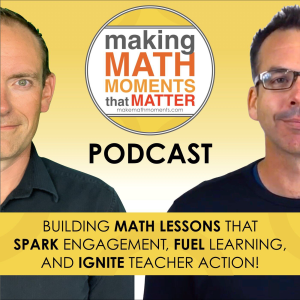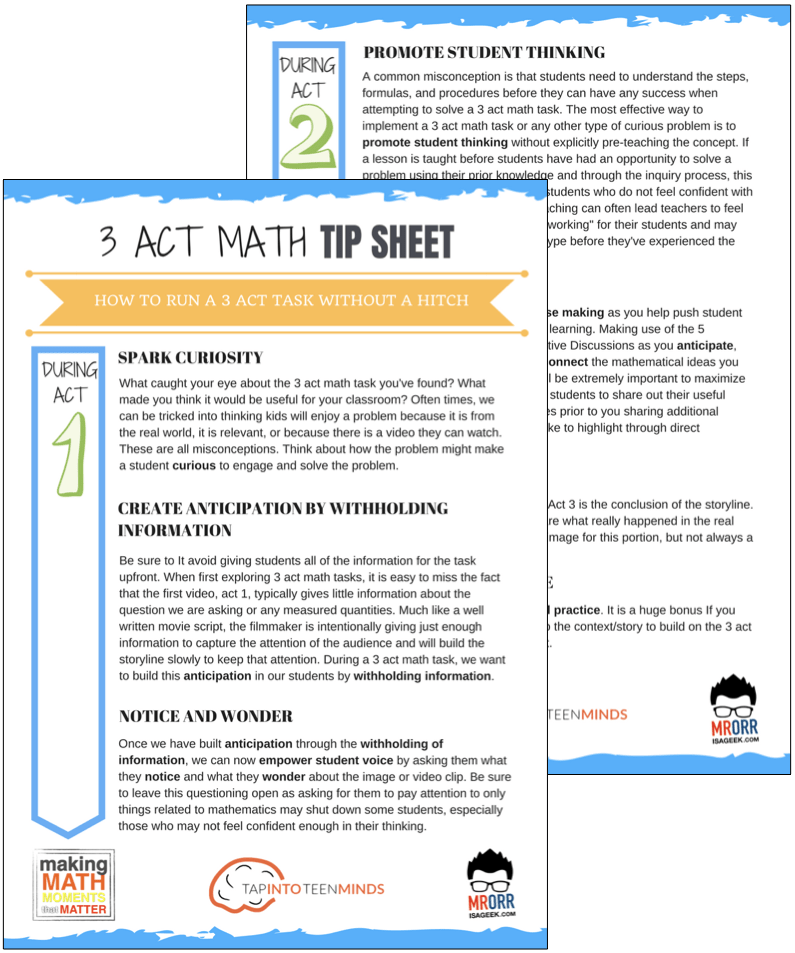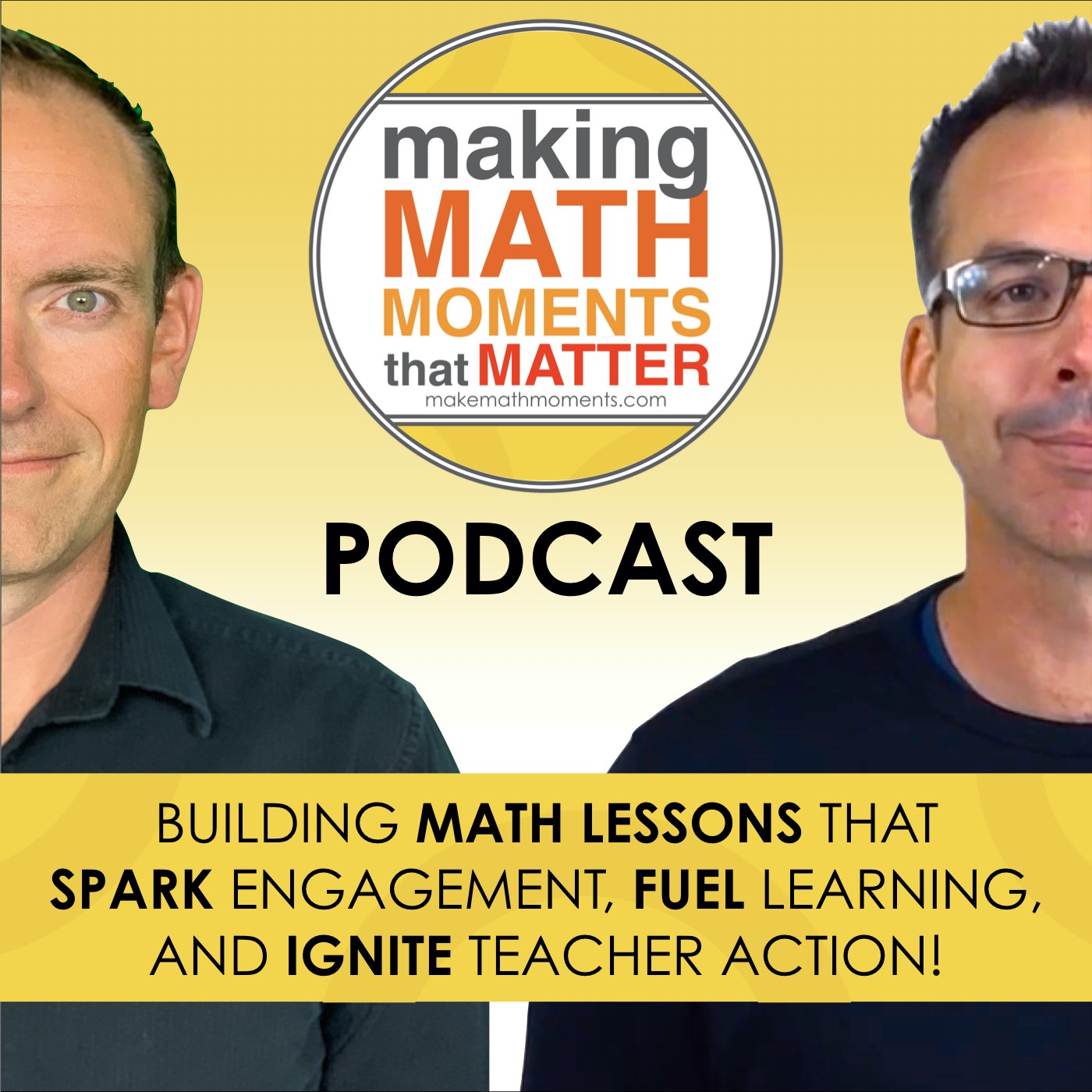Episode #311: How to Teach Division That Leads To Algebra: Why Knowing These Two Types of Division Are Essential
LISTEN NOW HERE…
WATCH NOW…
Episode Summary:
Why is division such a challenging concept for students to grasp, despite it being a fundamental part of elementary math?
Many teachers struggle to teach division in a way that truly sticks, often leading students to view it as confusing or disconnected from other math concepts. But imagine a classroom where students confidently approach division and see its connection to fractions, proportional reasoning, and algebraic thinking.
In this episode, you’ll uncover two types of division by using friendly numbers and contexts, unlocking connections to other areas of math. You’ll also gain insight into how understanding these two types of division can pave the way for stronger math reasoning skills. Plus, you’ll explore practical strategies for engaging students in hands-on division tasks that enhance their conceptual understanding.
Play this episode now and discover how knowing these two types will help transform division lessons into powerful, connection-building opportunities for your students.
Attention District Math Leaders:
How are you ensuring that you support those educators who need a nudge to spark a focus on growing their pedagogical-content knowledge?
What about opportunities for those who are eager and willing to elevate their practice, but do not have the support?
Book a call with our District Improvement Program Team to learn how we can not only help you craft, refine and implement your district math learning goals, but also provide all of the professional learning supports your educators need to grow at the speed of their learning.
Be Our Next Podcast Guest!
Join as an Interview Guest or on a Mentoring Moment Call

Apply to be a Featured Interview Guest
Book a Mentoring Moment Coaching Call
Are You an Official Math Moment Maker?

FULL TRANSCRIPT
Today we are exploring quite possibly one of the most misunderstood and complex concepts in the entire elementary curriculum. We are talking about division, but I would argue that if we could take the time to roll back and really explore division with super friendly numbers, really friendly contexts for the purpose of deeply understanding how this operator behaves, we would be able to unlock so many other connections and tackle so many other concepts of the elementary curriculum with a lot more understanding.
Through reasoning, division is connected to the work that we do in fractions, it’s connected to work in proportional reasoning and algebraic thinking. And so it’s really worth spending the time on.
So I want you to think for a minute about the question, what is division? If I was to walk up to any teacher or any student in your building and ask this question, how would they answer? I love this question with subtraction as well, and I’ll use it as an example while you’re thinking about your response. But I always say, if I was to walk up to people in a building and I said to them, and particularly students, what is subtraction? The response that I would hear from most is that subtraction is takeaway or removal. And although that is true of subtraction, it’s really only one piece of the puzzle. It’s only one way that that operator behaves.
If I want to really be able to use subtraction as a tool for thinking, then I need to know what does it perform, what does it do for us? How do I know when to use that operator? And for sure, the same could be said for division.
So I’m asking you to think now and maybe write it down or share it with a friend. If you’re listening along with a colleague or someone else is with you right now, maybe ask them this question as well: What is division?
Many of you may have said something like, “Well, division is fair share. Division is taking something and breaking it into equal parts.” If that is your answer, that is the type of division that we’re going to explore today in the first part of this episode. But that is only one part, and it’s only one way that division actually behaves for us.
We’re going to take some time to really unpack what division does. In the Ontario curriculum, under the teacher supports in grades three and four, they are super explicit about division, and they say in simplest terms, there are two types of division problems. And I would argue that this is true for sure. In simplest terms, division is not defined by just these two behaviors. In Vander Wall’s book, he mentions that there are essentially four structures for multiplication and division. Maybe in a future episode we’ll be able to dive into the others.
For today, we’re going to be looking at two types: equal sharing division (that’s the fair share scenario) and equal grouping division or measurement (quota) division.
I’m going to start with a context for you. If you’re at home or in your classroom or office and have access to a pen or pencil and paper, I would encourage you to draw this out, create a visual representation of the context I’m about to explain. If you’re driving or jogging or riding your bike right now, visualize the context in your mind.
The context comes from a Make Math Moments unit called “Sowing Seeds.” This is day one. When I wrote this unit, I was in the middle of prepping my garden in the spring, and so planting was on my mind. I dumped out a pack of seeds, specifically peas, and I noticed that there were 78 peas altogether. I had six pots to sow these into because I was growing my little seedlings at the time. I wanted an equal distribution of peas in each pot, so I needed to figure out how many peas per pot.
One thing I’ve noticed about this type of division is that typically you have two distinct units. In this scenario, our dividend is peas and our divisor is pots. Once we actually perform the operator, our result is a compound unit of peas per pot – it’s actually a rate. We’re trying to reveal how many per one pot, which connects to proportional reasoning.
Some students might approach this task through fair sharing, where they take a concrete material, and hand out one pea per pot over and over until they’ve used all 78 peas. Other students might be bold and put 10 peas in each pot right away, then fair share out the rest. In the end, we reveal that there are 13 peas per pot.
My approach to this task is slightly different, where I first split the peas into two pots, then into three parts, visualizing the halves and thirds. This reveals the same result: 13 peas per pot.
So, the behavior of this type of division reveals the rate or ratio to one pot. I would clearly state the learning goal with my class: “We are learning to create and solve fair share division problems.” I might ask students to reflect on what part division is in their own words or create their own problem involving fair sharing.
Now, let’s look at the second type of division: equal grouping division or measurement division, also called quota division. We’ll explore another context from day three of the same “Sowing Seeds” unit.
In this case, I noticed there were instructions on the seed packet for planting, saying the peas should be four inches apart, and I had 96 peas in total. I realized I could only put eight peas per pot. The question then becomes: How many pots do I need? We know the total number of peas and the number of peas per pot, but we’re trying to reveal the number of pots. Students might skip-count by eights or break it down in parts.
At the end of the day, we want to ensure teacher clarity, matching the context to the strategy for solving the problem.
Thanks For Listening
- Book a Math Mentoring Moment
- Apply to be a Featured Interview Guest
- Leave a note in the comment section below.
- Share this show on Twitter, or Facebook.
To help out the show:
- Leave an honest review on iTunes. Your ratings and reviews really help and we read each one.
- Subscribe on iTunes, Google Play, and Spotify.
DOWNLOAD THE 3 ACT MATH TASK TIP SHEET SO THEY RUN WITHOUT A HITCH!
Download the 2-page printable 3 Act Math Tip Sheet to ensure that you have the best start to your journey using 3 Act math Tasks to spark curiosity and fuel sense making in your math classroom!

LESSONS TO MAKE MATH MOMENTS
Each lesson consists of:
Each Make Math Moments Problem Based Lesson consists of a Teacher Guide to lead you step-by-step through the planning process to ensure your lesson runs without a hitch!
Each Teacher Guide consists of:
- Intentionality of the lesson;
- A step-by-step walk through of each phase of the lesson;
- Visuals, animations, and videos unpacking big ideas, strategies, and models we intend to emerge during the lesson;
- Sample student approaches to assist in anticipating what your students might do;
- Resources and downloads including Keynote, Powerpoint, Media Files, and Teacher Guide printable PDF; and,
- Much more!
Each Make Math Moments Problem Based Lesson begins with a story, visual, video, or other method to Spark Curiosity through context.
Students will often Notice and Wonder before making an estimate to draw them in and invest in the problem.
After student voice has been heard and acknowledged, we will set students off on a Productive Struggle via a prompt related to the Spark context.
These prompts are given each lesson with the following conditions:
- No calculators are to be used; and,
- Students are to focus on how they can convince their math community that their solution is valid.
Students are left to engage in a productive struggle as the facilitator circulates to observe and engage in conversation as a means of assessing formatively.
The facilitator is instructed through the Teacher Guide on what specific strategies and models could be used to make connections and consolidate the learning from the lesson.
Often times, animations and walk through videos are provided in the Teacher Guide to assist with planning and delivering the consolidation.
A review image, video, or animation is provided as a conclusion to the task from the lesson.
While this might feel like a natural ending to the context students have been exploring, it is just the beginning as we look to leverage this context via extensions and additional lessons to dig deeper.
At the end of each lesson, consolidation prompts and/or extensions are crafted for students to purposefully practice and demonstrate their current understanding.
Facilitators are encouraged to collect these consolidation prompts as a means to engage in the assessment process and inform next moves for instruction.
In multi-day units of study, Math Talks are crafted to help build on the thinking from the previous day and build towards the next step in the developmental progression of the concept(s) we are exploring.
Each Math Talk is constructed as a string of related problems that build with intentionality to emerge specific big ideas, strategies, and mathematical models.
Make Math Moments Problem Based Lessons and Day 1 Teacher Guides are openly available for you to leverage and use with your students without becoming a Make Math Moments Academy Member.
Use our OPEN ACCESS multi-day problem based units!
Make Math Moments Problem Based Lessons and Day 1 Teacher Guides are openly available for you to leverage and use with your students without becoming a Make Math Moments Academy Member.
Partitive Division Resulting in a Fraction
Equivalence and Algebraic Substitution
Represent Categorical Data & Explore Mean
Downloadable resources including blackline masters, handouts, printable Tips Sheets, slide shows, and media files do require a Make Math Moments Academy Membership.
ONLINE WORKSHOP REGISTRATION

Pedagogically aligned for teachers of K through Grade 12 with content specific examples from Grades 3 through Grade 10.
In our self-paced, 12-week Online Workshop, you'll learn how to craft new and transform your current lessons to Spark Curiosity, Fuel Sense Making, and Ignite Your Teacher Moves to promote resilient problem solvers.










0 Comments